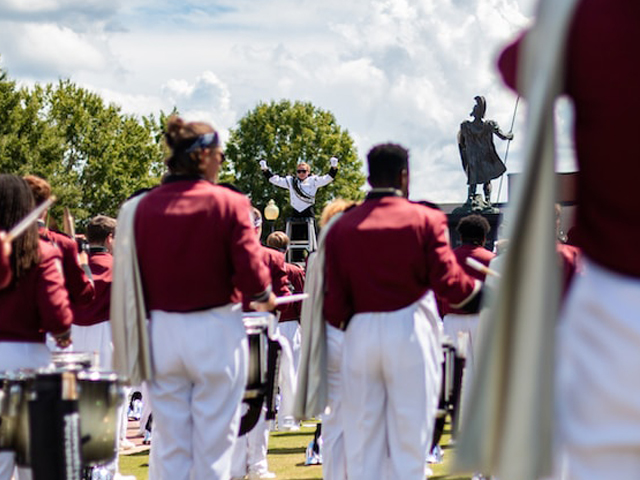
The sea of gowns and caps looks the same from a distance, but up close, graduation tells a different story. Each lei, sash, or bead speaks for something deeper: language, homeland, history. These aren’t fashion choices. They’re living symbols carried across the stage with pride and purpose.
For today’s graduates, culture isn’t left at the door. It walks beside them. As families cheer and cameras flash, symbols once held quietly now take center stage. They mark survival, success, and belonging. What students wear says as much as the diploma they receive. Everyone watching understands this moment means more than the end of school.
The Evolution of Graduation Traditions
Graduation attire has always carried meaning, but its expression has changed over time. Academic regalia once emphasized formality and conformity, leaving little room for individuality. Robes were uniform, caps were square, and personal flair was discouraged. The ceremony honored achievement, but offered few ways to show who that achievement belonged to.
Now, campuses tell a different story. Students drape flags across their shoulders, wear stoles embroidered with family names, and receive handmade gifts rooted in tradition. These aren’t quiet additions—they’re statements. Traditions that were once tucked away have found their place in public view, thanks to growing cultural pride and shifting university policies.
Commencement no longer masks identity. It amplifies it. As the student body becomes more diverse, so does the visual language of the ceremony. Every woven thread or flower tucked into a cap signals something earned, something honored, and something proudly shared.
Different Cultural Symbols at Graduations and Their Meanings
Commencement marks more than the end of school. For many, it’s the first time their heritage stands center stage. Caps and gowns are expected, but what students choose to wear beyond that carries deep meaning. These personal touches honor the people, places, and histories behind each graduate’s success. Every color, cloth, and symbol says something real. It’s a quiet way of telling the world, this is who I am, and this is who walked with me.
Leis: Expressions of Love, Legacy, and Community
Leis are a powerful presence at graduation, especially for students with roots in Hawaii and the Pacific Islands. Giving Hawaiian leis is an expression of love and pride. It marks a major life transition and honors the graduate’s accomplishment. Each lei represents something personal: the support of family, the guidance of teachers, the strength of a community that stood behind the journey.
When a student chooses a fresh Hawaiian lei, the meaning deepens. Fresh flowers carry the spirit of aloha—care, respect, and connection. In many families, making or selecting a lei involves more than one person. It becomes an act of celebration shared by everyone who helped along the way. The lei rests on the shoulders of the graduate, but its roots reach far beyond them.
Kente Cloth: A Nod to African Heritage and Academic Achievement
Kente cloth doesn’t whisper; it speaks boldly. Worn by many African American students, this vibrant fabric signals respect for ancestry and celebration of accomplishment. Its patterns and colors are full of purpose, each one tied to values like unity, knowledge, and endurance.
When a student wears a Kente stole, they carry more than fabric. They carry the legacy of those who opened doors and held them open. For families in the crowd, that cloth can bring tears. It honors a long path paved by strength, sacrifice, and hope.
Serapes and Rebozos: Cultural Threads of Mexican and Latinx Pride
Graduates from Mexican and Latino communities often arrive wrapped in color—serapes and rebozos rich in pattern and history. These garments reflect family traditions passed down over time. They’re worn with purpose, bringing culture into a space where it might otherwise go unseen.
For many, the cloth represents roots that run deep. It may have been brought from home or handed down by a grandparent. It’s more than a ceremony. It’s memory, pride, and a promise that this achievement belongs to everyone who came before.
National Flags: Bold Statements of Belonging and Diaspora Pride
Draping a flag across your shoulders on graduation day says more than words ever could. For students with immigrant backgrounds, that flag represents home, history, and the journey that led to this moment.
It’s a way to show respect for both places at the same time. The flag speaks to the land where stories began and the new life built from those beginnings. For many, it’s a tribute to parents who worked hard so this day could come. It’s a celebration with roots and wings.
Indigenous Regalia – Honoring Sacred Traditions and Sovereignty
For indigenous students, commencement is both a personal milestone and a cultural affirmation. Wearing regalia—beadwork, feathers, or other sacred items—is a way to honor tradition in a space that hasn’t always been inclusive.
These elements carry meaning tied to land, family, and spiritual connection. When worn at graduation, they show that education and culture walk together. Each piece is chosen with care, carrying strength, resilience, and a powerful sense of place.
Hijabs and Cultural Headwraps: Identity, Faith, and Self-Expression
Head coverings like hijabs and wraps speak volumes in silence. For many students, they reflect a deep commitment to faith, identity, and dignity. Worn with pride, they turn a uniform moment into something beautifully personal.
On graduation day, these pieces often shine—bright fabrics, elegant embroidery, or family-chosen designs that mark the moment as special. It’s a quiet celebration of presence, of saying I belong here, without needing to explain. And for many families, it’s a moment of recognition long overdue.
Wrapping Up
Graduation is a turning point, but it’s also a moment of expression. For many students, what they wear on that stage speaks louder than the diploma they carry. These cultural symbols are more than traditions. They are acts of remembrance, pride, and presence.
When a graduate adds something personal—a lei, a sash, a flag—they are declaring who they are and where they come from. They are honoring those who helped them rise. These gestures bring depth to the ceremony and remind everyone watching that education is not a path walked alone.











